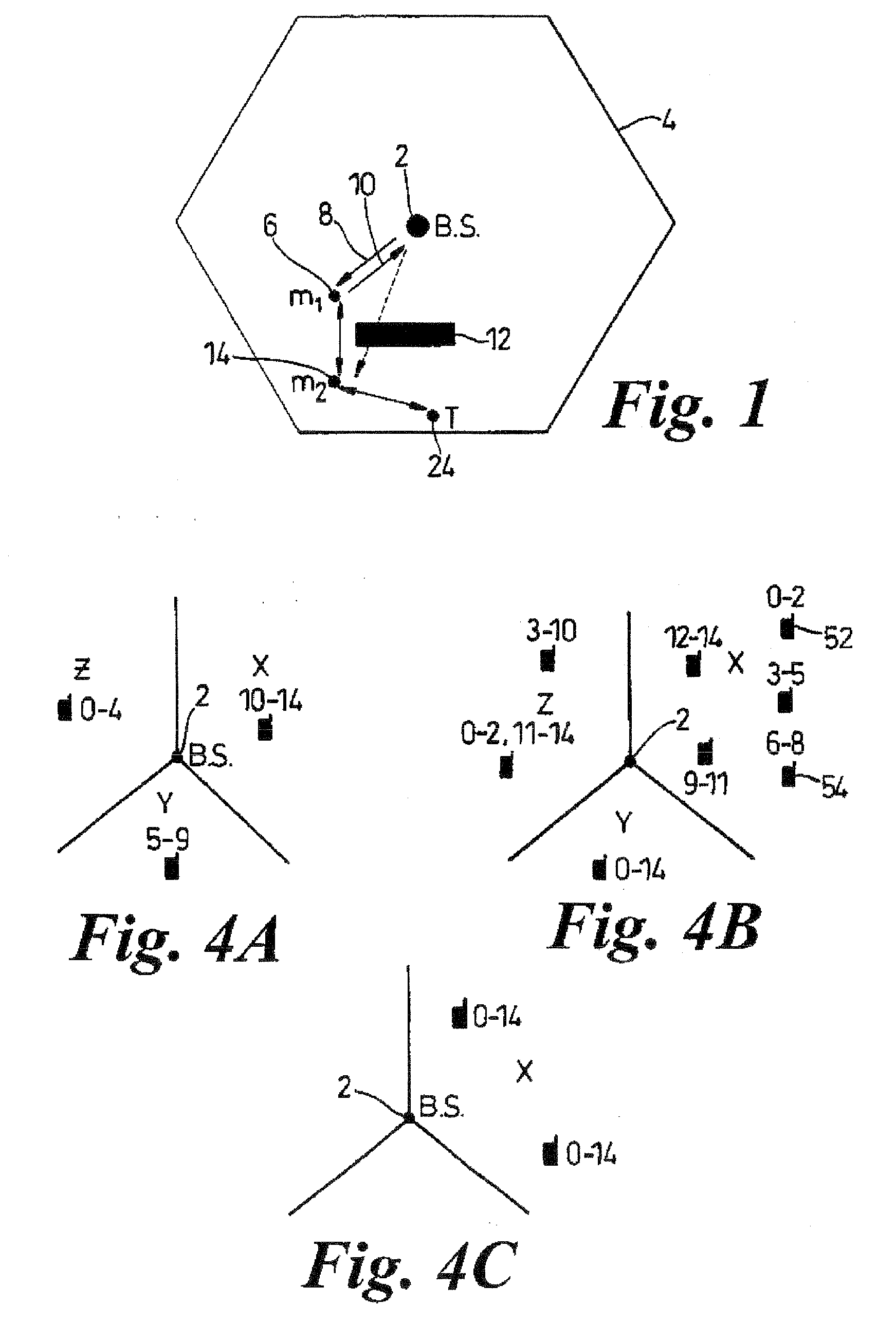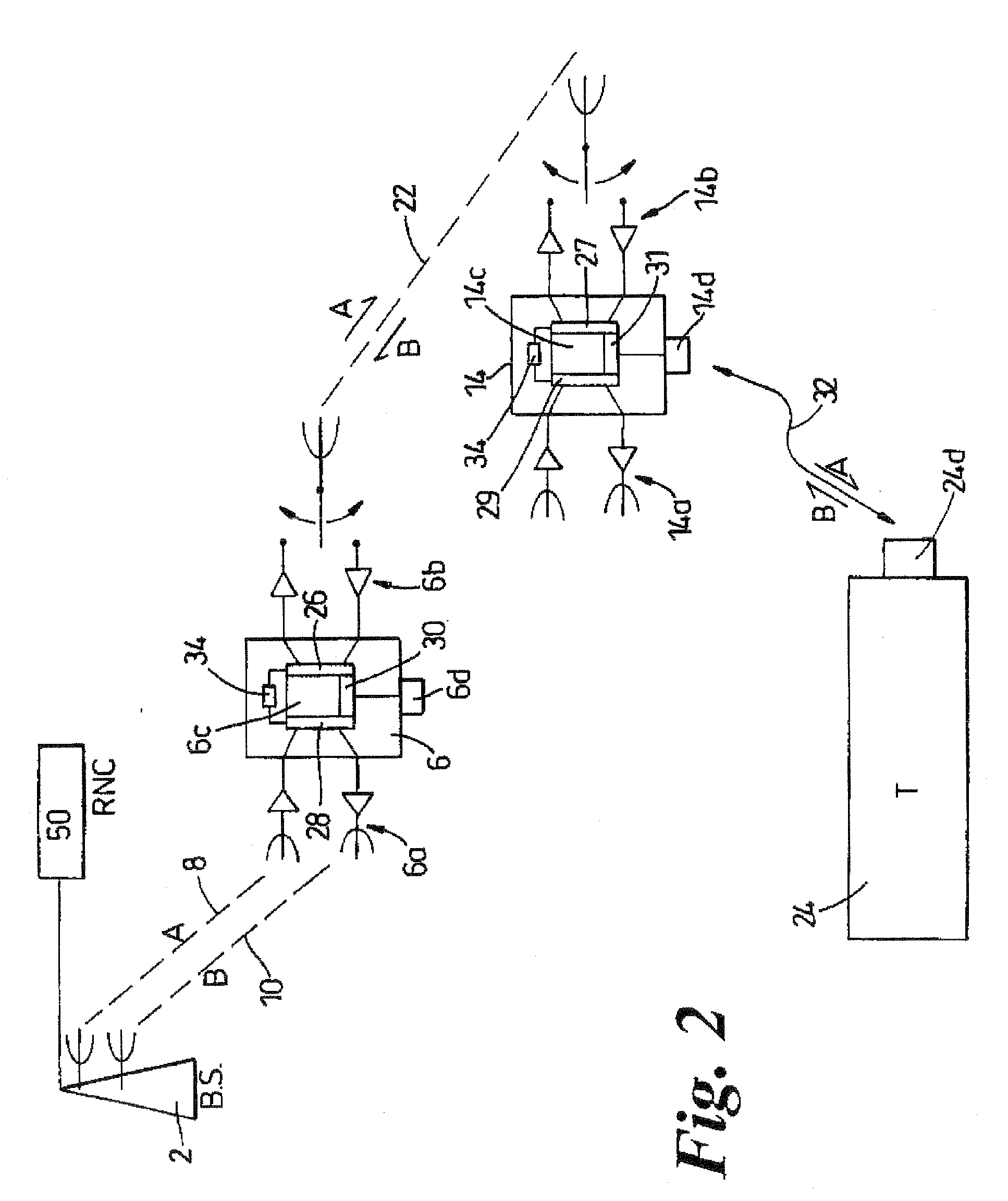Telecommunications network
a technology of telecommunication network and network, applied in the field of telecommunication network, can solve the problems of prohibitively expensive deployment of repeaters in regions with high user density, inability of user equipment within the cell inability to communicate with the base station, etc., to achieve the effect of improving capacity and coverage, facilitating high bit data rate communication, and facilitating tdd spectrum utilisation
- Summary
- Abstract
- Description
- Claims
- Application Information
AI Technical Summary
Benefits of technology
Problems solved by technology
Method used
Image
Examples
Embodiment Construction
[0045]There will now be described by way of example the best mode contemplated by the inventor for carrying out the invention. In the following description, numerous specific details are set out in order to provide a complete understanding of the present invention. It will be apparent, however, to those skilled in the art that the present invention may be put into practice with variations of the specific.
[0046]FIG. 1 shows a cell of a wireless telecommunications network having a central base station (2) transmitting and receiving radio frequency (rf) signals over a geographical area or cell bounded by the hexagonal boundary (4) of theoretical equal signal strength with adjacent cells.
[0047]The network is made up of a plurality of such cells mosaiced over a wider geographical area, as is well known in the art.
[0048]In a typical 3G system two or three paired channels (10+10 MHz or 15+15MHz) and one unpaired channel (5 MHz) will generally be available. The paired channels may be used f...
PUM
 Login to View More
Login to View More Abstract
Description
Claims
Application Information
 Login to View More
Login to View More - R&D
- Intellectual Property
- Life Sciences
- Materials
- Tech Scout
- Unparalleled Data Quality
- Higher Quality Content
- 60% Fewer Hallucinations
Browse by: Latest US Patents, China's latest patents, Technical Efficacy Thesaurus, Application Domain, Technology Topic, Popular Technical Reports.
© 2025 PatSnap. All rights reserved.Legal|Privacy policy|Modern Slavery Act Transparency Statement|Sitemap|About US| Contact US: help@patsnap.com



